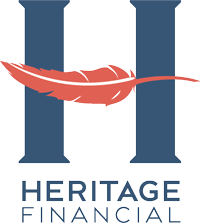The more wealth you accumulate, the more you may worry about protecting it from future potential creditors. Whether your concern is for your personal assets or your business, various asset protection tools exist to keep your property safe from tax collectors, accident victims, health-care providers, credit card issuers, business creditors, and creditors of others.
To insulate your property from such claims, you’ll have to evaluate each tool in terms of your own situation. You may decide that insurance and a Declaration of Homestead may be sufficient protection for your home because your exposure to a claim is low. Remember, no asset protection tool is guaranteed to work, and you may have to adjust your asset protection strategies as your situation, or the laws change.
Liability insurance is your first and best line of defense
Liability insurance is at the top of any plan for asset protection. You should consider purchasing or increasing umbrella coverage on your homeowners policy. For business-related liability, purchase or increase your liability coverage under your business insurance policy. Generally, the cost of the premiums for this type of coverage is minimal compared to what you might be required to pay under a court judgment should you ever be sued.
A Declaration of Homestead protects the family residence
Your primary residence may be your most significant asset. State law determines the creditor and judgment protection afforded a residence by way of a Declaration of Homestead, which varies greatly from state to state. For example, a state may provide a complete exemption for a residence (i.e., its entire value), a limited exemption (e.g., up to $1,000,000 in the state of Massachusetts), or an exemption under certain circumstances (e.g., a judgment for medical bills).
Filing a Declaration of Homestead is a relatively straightforward and inexpensive process that can typically be done by the homeowner. The process entails filling out the appropriate form and recording it at the Registry of Deeds in the county or district where the property is located. If you need help completing the form or have questions on the form, your estate planning attorney can assist.
Dividing assets between spouses can limit exposure to potential liability
Perhaps you work in an occupation or business that exposes you to greater potential liability than your spouse’s job does. If so, it may be a good idea to divide assets between you so that you keep only the income and assets from your job, while your spouse takes sole ownership of your investments and other valuable assets. Generally, your creditors can reach only those assets that are in your name.
Business entities can provide two types of protection — shielding your personal assets from your business creditors and shielding business assets from your personal creditors
Consider using a corporation, limited partnership, or limited liability company (LLC) to operate the business. Such business entities shield the personal assets of the shareholders, limited partners, or LLC members from liabilities that arise from the business. The liability of these owners will be limited to the assets of the business.
Conversely, corporations, limited partnerships, and LLCs provide some protection from the personal creditors of a shareholder, limited partner, or member. In a corporation, a creditor of an individual owner can place a lien on, and eventually acquire, the shares of the debtor/shareholder, but would not have any rights greater than the rights conferred by the shares. In limited partnerships or LLCs, under most state laws, a creditor of a partner or member is entitled to obtain only a charging order with respect to the partner or member’s interest. The charging order gives the creditor the right to receive any distributions with respect to the interest. In all respects, the creditor is treated as a mere assignee and is not entitled to exercise any voting rights or other rights that the partner or member possessed.
Certain trusts can preserve trust assets from claims
People have used trusts to protect their assets for generations. The key to using a trust as an asset protection tool is that the trust must be irrevocable and become the owner of your property. Once given away, these assets are no longer yours and are not available to satisfy claims against you. To properly establish an asset protection trust, you must not keep any interest in the trust assets or control over the trust.
Trusts can also protect trust assets from potential creditors of the beneficiaries of the trust. The extent to which a beneficiary’s creditors can reach trust property depends on how much access the beneficiary has to the trust property. The more access the beneficiary has to the trust property, the more access the beneficiary’s creditors will have.
Typically, the strongest protection against creditors for the beneficiaries would be to have a third-party independent trustee with complete discretion. It can often be difficult for people to find a trusted third-party independent trustee to name in their trust, but through our relationship with Schwab we are able to offer this service to Heritage clients.
A word about fraudulent transfers
The court will ignore transfers to an asset protection trust if:
- A creditor’s claim arose before you made the transfer
- You made the transfer with the intent to defraud a creditor
- You incurred debts without a reasonable expectation of paying them
Through our comprehensive wealth management planning, we’ve identified numerous cases in which items that have gone overlooked or unreviewed are brought to light and addressed accordingly. Here are a few examples of real-life oversights corrected or improvements implemented for our clients:
- Removing mortgagee endorsements left on policies for mortgages that no longer exist
- Updating unchanged appraisal values for separately scheduled items that have appreciated substantially
- Highlighting exorbitant premiums and providing referrals for more competitive pricing
Providing liability analysis, reviewing insurance coverage, and estate planning guidance are all a part of our comprehensive wealth management services, so our clients can feel confident in their financial future.


